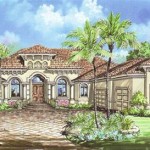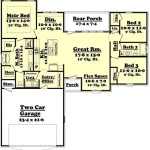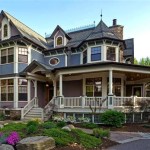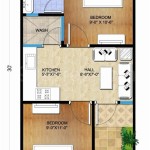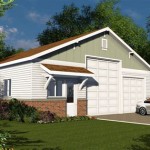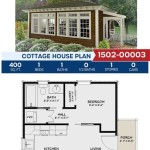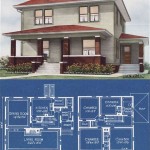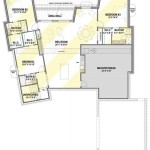French Country House Plans: Designs for Timeless Elegance
French Country house plans represent a design aesthetic that evokes the charm and rustic elegance of the French countryside. These plans often incorporate elements that emphasize comfort, natural materials, and a connection to the surrounding landscape. The appeal of French Country design lies in its ability to blend sophistication with a relaxed, livable atmosphere, making it a popular choice for those seeking a home that feels both luxurious and welcoming.
The origins of French Country architecture can be traced back to the provinces of France, where rural estates and farmhouses evolved to reflect the practical needs and aesthetic preferences of their inhabitants. Over time, these architectural styles were adopted and adapted, resulting in a recognizable set of characteristics that are still admired today. Modern French Country house plans draw inspiration from these historical precedents, offering a range of options for creating a home that embodies the spirit of the French countryside.
Key Features of French Country House Plans
Several distinguishing characteristics define French Country house plans. These features contribute to the overall aesthetic and functionality of the design, creating a harmonious blend of form and function.
Exterior Elements: The exterior of a French Country home typically features a steeply pitched roof, often made of slate or tile. Dormers, which are windows projecting from the roof, are a common element, adding architectural interest and allowing for more natural light in the upper stories. Stucco or stone cladding is frequently used for the exterior walls, providing a textured and durable finish. Arched windows and doorways are also characteristic features, adding a touch of elegance and softening the lines of the facade. Shutters, often decorative, are another common detail, adding visual appeal and a sense of warmth. The overall effect is one of understated refinement and rustic charm.
Interior Layout: Interior layouts in French Country homes often prioritize open living spaces, creating a sense of flow and connection between different areas of the house. The kitchen is typically the heart of the home, designed as a gathering place for family and friends. Large islands, farmhouse sinks, and ample counter space are common features. Formal dining rooms are also frequently included, providing a space for more formal gatherings. Bedrooms are often located on the upper floors, offering privacy and separation from the main living areas. Bathrooms are designed to be luxurious and relaxing, with features such as soaking tubs and walk-in showers. The overall layout is designed to be both functional and aesthetically pleasing, creating a comfortable and inviting living environment.
Material Palette: The material palette used in French Country homes emphasizes natural and rustic elements. Stone, wood, and wrought iron are common materials, adding texture and warmth to the design. Exposed beams are often used in the ceilings, adding architectural interest and highlighting the structure of the home. Hardwood floors are a common choice, providing a durable and aesthetically pleasing surface. Natural stone is frequently used for fireplaces and countertops, adding a touch of elegance and sophistication. Fabrics such as linen and cotton are often used for upholstery and window treatments, creating a soft and comfortable atmosphere. The overall material palette is designed to be both durable and aesthetically pleasing, creating a home that feels both luxurious and inviting.
Designing for Comfort and Functionality
While aesthetics are important, French Country house plans also prioritize comfort and functionality. The goal is to create a home that is not only beautiful but also practical and livable. Several design considerations contribute to this goal.
Natural Light: Maximizing natural light is a key design principle in French Country homes. Large windows and doors are often used to bring in ample sunlight, creating a bright and airy atmosphere. Skylights and dormers can also be used to add natural light to interior spaces. The strategic placement of windows can also help to capture views of the surrounding landscape, connecting the home to its environment. The use of light-colored walls and ceilings can also help to reflect light and brighten the space. The overall goal is to create a home that is filled with natural light, creating a warm and inviting atmosphere.
Outdoor Living Spaces: French Country homes often incorporate outdoor living spaces, such as patios, porches, and gardens. These spaces provide opportunities for relaxation and entertainment, extending the living area beyond the interior walls. Patios and porches are often furnished with comfortable seating and dining areas, creating a perfect space for outdoor meals and gatherings. Gardens are often planted with flowers, herbs, and vegetables, adding beauty and functionality to the landscape. The integration of indoor and outdoor spaces is a key element of French Country design, creating a seamless connection between the home and its surroundings.
Modern Amenities: While French Country homes often evoke a sense of tradition and history, they also incorporate modern amenities to meet the needs of contemporary living. Modern kitchens are equipped with state-of-the-art appliances and ample storage space. Bathrooms are designed to be luxurious and functional, with features such as soaking tubs and walk-in showers. Energy-efficient heating and cooling systems are often used to ensure comfort and sustainability. Smart home technology can also be integrated into the design, providing convenience and control. The overall goal is to create a home that is both beautiful and functional, combining the charm of the French countryside with the conveniences of modern living.
Adapting French Country Style to Different Locations
French Country house plans can be adapted to suit a variety of locations and climates. While the core design principles remain the same, certain modifications may be necessary to ensure that the home is both aesthetically pleasing and functional in its specific environment.
Climate Considerations: In warmer climates, French Country homes may benefit from features such as shaded porches and courtyards, which provide relief from the heat. Light-colored roofing materials can also help to reflect sunlight and keep the home cooler. In colder climates, insulation and energy-efficient windows are essential for maintaining a comfortable temperature. Fireplaces and wood-burning stoves can also provide supplemental heating. The orientation of the house can also be adjusted to maximize sunlight exposure during the winter months and minimize it during the summer months. Adapting the design to suit the local climate is essential for creating a comfortable and energy-efficient home.
Regional Variations: French Country architecture varies from region to region, reflecting the local materials and design traditions. In Provence, for example, homes often feature stucco walls painted in warm, earthy tones, as well as tiled roofs and shutters. In Normandy, homes may be built of stone or brick, with steeply pitched roofs and dormers. Adapting the design to reflect the regional characteristics of the local area can help to create a home that feels authentic and connected to its surroundings. Researching the local architectural styles and incorporating these elements into the design can add character and charm to the home.
Landscape Integration: The landscape surrounding a French Country home should complement the architectural style. Gardens planted with flowers, herbs, and vegetables can add beauty and functionality to the property. Trees and shrubs can provide shade and privacy. Stone pathways and patios can create inviting outdoor living spaces. The goal is to create a seamless connection between the home and its surroundings, blurring the lines between indoor and outdoor living. The landscape should be designed to be both beautiful and functional, creating a peaceful and inviting environment.
French Country house plans offer a timeless and elegant design aesthetic that is both beautiful and functional. By understanding the key features of this style, and by adapting it to suit specific locations and climates, it is possible to create a home that embodies the charm and sophistication of the French countryside. The emphasis on natural materials, open living spaces, and outdoor living areas creates a comfortable and inviting environment that is perfect for both relaxing and entertaining. As a result, French Country house plans remain a popular choice for those seeking a home that is both stylish and livable.

French Country House Plans For A 5 Bedroom 4 Bath Home

Home Plan Avignon Sater Design Collection

French Country House Plans Style Home

Home Plan Avignon Sater Design Collection

French Country House Plans Home Design Floor

French Country Transitional Bainbridge Design Group
House Plan 120 2077 3 Bedroom 2641 Sq Ft Country French Home Tpc

The Versailles Madden Home Design French Country Homes

French Country House Plans Design Evolutions Inc Ga

French Country Home 4 Bedrms 3 Baths 2666 Sq Ft Plan 206 1050

